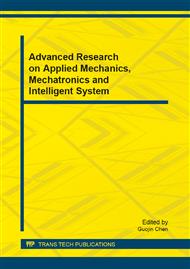p.8
p.15
p.19
p.23
p.27
p.31
p.37
p.41
p.46
Free Surface Green Function Research Based on Cloud Computing for Ship Movement on the Water
Abstract:
In order to easy use Green function on cloud computation, the author consider control equation of point source with free surface, and discuss the representation of Green function on cloud computation, and then propose the discrete calculation expression as well as the calculation procedure. Finally, the two-dimensional graphics of the Green functions real and imaginary parts are plotted.
Info:
Periodical:
Pages:
27-30
Citation:
Online since:
July 2013
Authors:
Keywords:
Price:
Сopyright:
© 2013 Trans Tech Publications Ltd. All Rights Reserved
Share:
Citation:


